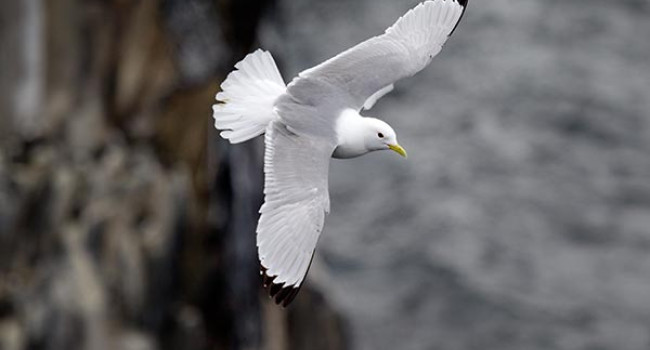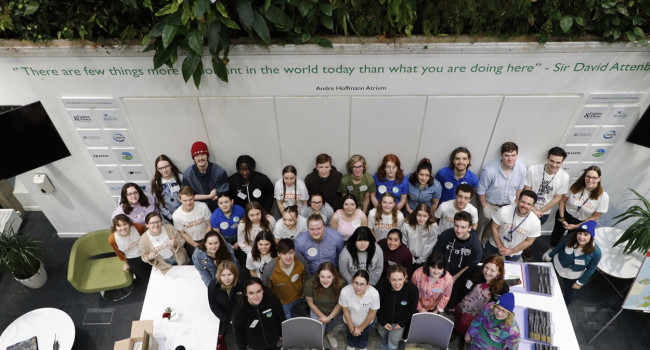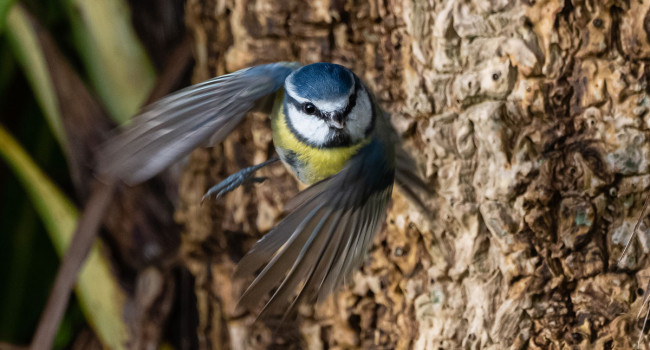Fifty years counting ducks
19 Jan 2016 | No. 2016-02
January 16th is the 50th anniversary of the International Waterbirds Census (IWC) in which volunteers from over one hundred countries will get out in search of their waterbirds. The IWC is the most globally extensive, and one of the longest running, biodiversity monitoring programmes in the world and UK birdwatchers have been there from the start.
This weekend will see 3,000 volunteers across the country head out to count waders, wildfowl and other waterbirds at their local lakes and estuaries. Sitting on the edge of the European continent, the British Isles are important for waterbirds escaping the extreme cold winters of northern and eastern Europe. During a typical January, the volunteers that take part in the monthly BTO/RSPB/JNCC Wetland Bird Survey (WeBS) record over 3 million waterbirds. These January records will be collated by Wetlands International for the IWC; each year 30-40 million waterbirds are counted around the world.
This winter the volunteer effort is even more impressive, as a special Non-Estuarine Waterbird Survey (NEWS) is taking place along the British and Irish coastlines. This will increase our knowledge of species such as Turnstones and Great Northern Divers that depend on our beaches and inshore waters.
Why is the IWC important? Thanks to WeBS volunteers we now know that populations of some of the birds counted in the UK are changing. However, the situation in other countries can be very different and it is vital to get a more complete assessment of the populations that use the whole East Atlantic Flyway which extends from Arctic Greenland and Russia to southern Africa. This international context helps us understand, for example, that whilst declining UK trends in the numbers of wintering Dunlin may be due to climate change-related 'short-stopping' of birds over-wintering closer to their breeding grounds, Oystercatchers - in contrast - are declining throughout Europe.
To improve the completeness of the IWC dataset, WeBS has been investing in the development of waterbird monitoring along the East Atlantic Flyway by training and supporting ornithologists in Sierra Leone in western Africa to take part in the January census as part of a 'twinning' initiative.
Teresa Frost, WeBS National Organiser at the BTO, said “Waterbirds give us spectacular natural experiences in winter - from the grand aerial displays of vast flocks of waders and roar of thousands of geese at our internationally important estuaries to the colourful array of ducks and swans at your local lake. The birds you’ve seen in autumn may be counted hundreds of miles away in January during the IWC – showing how interconnected the world is for wild waterbirds and why internationally coordinated counting is important.”
David Stroud, Joint Nature Conservation Committee (JNCC), commented, “Data and information from the IWC underpins so many aspects of the work of governments to conserve waterbirds and their wetland habitats – from conservation status assessments; to the identification, designation and monitoring of important sites; and the provision of essential international contexts for species management issues. It is imperative that we maintain the IWC and continue to develop and enhance its activities as the basis for the next 50 years of waterbird conservation.”
Richard Hearn, Head of Monitoring at the Wildfowl & Wetlands Trust (WWT),commented, “Collating national waterbird monitoring data for the IWC is a crucial part of understanding which species are our most pressing conservation priorities. Many factors can affect population trends at a national scale, and some may not be impacting the population as a whole. European White-fronted Geese in the UK have declined dramatically, however from the IWC we know they have shifted their range eastwards and overall are increasing. In contrast, IWC analyses indicate that the decline in UK Common Pochard numbers largely reflects the overall population trend, and this species is consequently becoming one of Europe’s most urgent conservation priorities.”
Simon Wotton, RSPB Senior Conservation Scientist commented, “The IWC is a great example of how monitoring by volunteers at a global scale can be used to deliver conservation action. From the UK perspective, it is vital to know how waterbirds that are breeding, wintering or on migration in the UK are doing along the entire East Atlantic flyway, from the Arctic to West Africa.”
Anyone can take part in the IWC, for more information on IWC and WeBS, please visit – www.wetlands.org/iwc50 and www.bto.org/webs.
Notes for Editors
- IWC - The census takes place every year in over 100 countries with the involvement of around 15,000 counters, most of whom are volunteers. Between 30 million and 40 million waterbirds are counted each year around the world, and details of the counts and the sites where they take place are held on the IWC database. The IWC is the most globally extensive and one of the longest running biodiversity monitoring programme in the World!
- WeBS - The Wetland Bird Survey (WeBS) is the monitoring scheme for non-breeding waterbirds in the UK, which aims to provide the principal data for the conservation of their populations and wetland habitats. Counts of UK wildfowl have been made every winter since 1947 with other waterbird species added over time. Unlike many countries, counts are made monthly, with the January counts contributing to the IWC.
WeBS is a partnership between the British Trust for Ornithology, the Royal Society for the Protection of Birds and the Joint Nature Conservation Committee (the last on behalf of the statutory nature conservation bodies: Natural England Natural Resources Wales and Scottish Natural Heritage and the Department of the Environment Northern Ireland) in association with the Wildfowl and Wetlands Trust.
- NEWS – The Non-Estuarine Waterbird Survey covering coastline habitats not regularly counted in WeBS takes place every nine years.
- The BTO is the UK's leading bird research charity. A growing membership and up to 60,000 volunteer birdwatchers contribute to the BTO's surveys, collecting information that underpins conservation action in the UK. The BTO maintains a staff of 100 at its offices in Thetford, Stirling, Bangor (Wales) and Bangor (Northern Ireland), who analyse and publicise the results of surveys and projects. The BTO's work is funded by BTO supporters, government, trusts, industry and conservation organisations.www.bto.org
Contact Details
Dr Teresa Frost
(WeBS National Organiser)
Office: 01842 750050
(9am to 5.30pm)
Email: teresa.frost [at] bto.org
Paul Stancliffe
(BTO Media Manager)
Office: 01842 750050
(9am to 5.30pm)
Mobile: 07585 440910 (anytime)
Email: press [at] bto.org
Images are available for use alongside this News Release.
Please contact images [at] bto.org quoting reference 2016-02
The BTO has an ISDN line available for radio interviews.
Please contact us to book an interview
Office: 01842 750050






Share this page